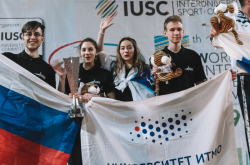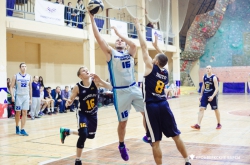The fame of chess came to Russia long before The Queen’s Gambit, a Netflix hit. Ask nearly any adult or kid here, and they will name the pieces and how they move, and maybe show you some basic endgames. Knowing that our country is home to the greatest number of top chess players listed by the International Chess Federation (FIDE), you might think chess is a part of the Russian genetic code.
Indeed, the game of chess is deeply ingrained in our culture, but it didn’t happen until the 20th century. And it was no accident.
-
A lot of money and resources were put into it. With the establishment of the USSR, chess became a state-sponsored game. Time and finances were granted to those wanting to succeed in the sport.
-
A game for everyone. After the collapse of the Russian Empire, chess was no longer just for the elites. It became widespread, so much that almost every household had a chessboard. Besides, for many people living in poverty, it was an accessible and affordable form of entertainment.
-
Taught from a very young age. Usually, children were introduced to chess starting at the age of four. Sometimes, they even had it as a subject in school. Chess was no longer seen as a mere game, but as an actual academic subject.
-
Loved by the leaders. Key Soviet leaders, like Vladimir Lenin, were avid players, so many initiatives in the field were granted approval.
That was history, but what about now? With Soviet times long gone, is chess still a thing? To learn more about how chess culture is developing at ITMO, we got in touch with Ivan Zakharikov, an ITMO Master’s student, the founder of ITMO’s Chess Club, and the coach of the university’s table tennis club.

Ivan Zakharikov. Photo courtesy of the subject.
What is the club’s key objective?
Firstly, students can join the club to gain knowledge and get points for PE classes.
The goal of promoting chess at ITMO is to support the personal development of students and expand their choices: there are already about 80 sports clubs at the university, and we're adding one more to choose from.
We run university- and city-wide events for the benefit of different groups; for example, we have a competition for first-year students, where newcomers can try themselves regardless of their experience. Starting in 2020, we organize the ITMO Open Chess Championship, where students from other universities can come and play together with us, so that we can mingle, exchange our experience, and find friends based on a common interest.
With the establishment of the club, we got the opportunity to participate in international and national events. And in 2019, our team took second place at the World InterUniversities Championships in Croatia. By involving students in such activities, we shape a community that cares about chess. And recently, we became winners of the championship among St. Petersburg universities. We’ve never won such student competitions before, and it’s also the first time in six years we’ve made it to the top three in fast chess!
What does chess training consist of?
During training, a great emphasis is placed on solving tactical puzzles, in which you must find the winning sequence, or endgame studies, which involve thinking over as many moves as possible. As you may know, chess players should think not one, but 10-15 moves ahead.
Apart from puzzles, we analyze particular games, like those of Magnus Carlsen, the World Chess Champion, or study chess openings such as the Sicilian Defense, the Italian Opening, or the Spanish Opening. We’re paying attention to how players use the theory in practice and offer them to finish the game and see if they can do it like a World Chess Champion.
Students finish their training by playing fast chess to solidify their knowledge.
Are there international students in the club?
We’re in demand among international students, as playing with us is a way to get some points for a PE course. Vietnamese students are active in online tournaments. Also, there was a student from Israel who took part in ITMO’s Chess League competition. Sometimes they are exchange students who show interest in playing chess at the university during their stay.
You’re a coach at both the chess and the table tennis clubs. Are these sports in any way connected?
There’s an unusual sport called chess pong. It’s a hybrid of chess and table tennis, where two games of chess are followed by two games of table tennis. This activity is rapidly gaining popularity as it brings together fans of both sports. For four years in a row, every February, I organize a chess pong tournament, and I would say there are plenty of enthusiasts.
Chess taught me to think and make decisions quickly, which is extremely useful in table tennis.
Who’s your favorite chess player?
I’ve never cared for idols, but here I’d single out a former world chess champion, Garry Kasparov (Гарри Каспаров, признан иноагентом), both as a player and a person. He made a great contribution not only as a sportsman but also by organizing numerous events. He left this sport undefeated, and for a long time, he held a rating record that was broken only by Magnus Carlsen, who he himself trained.
What’s your advice to those willing to learn to play chess or take their skills to a new level?
Those who already know some basics should solve chess puzzles online, like on lichess, where players can join online tournaments and try their hands at various puzzles. Besides practice, owning a chess board at home helps visualize the pieces and their positions. And, of course, one can gain and develop their knowledge by reading related material and analyzing games by top chess players. To newbies, I’d recommend learning the essentials with a coach and then following the above-mentioned path.




